Euphorbia plants are fascinating, offering unique shapes, textures, and colors. They may look like cacti, but they belong to a completely different plant family. If you’re looking for low-maintenance, indoor-friendly Euphorbias, you’re in the right place! In this guide, we’ll explore some of the best Euphorbia varieties that thrive inside your home.
Contents
- 1 Crown of Thorns (Euphorbia milii)
- 2 African Milk Tree (Euphorbia trigona)
- 3 Pencil Cactus (Euphorbia tirucalli)
- 4 Basketball Euphorbia (Euphorbia obesa)
- 5 Dragon Bones Tree (Euphorbia lactea)
- 6 Devil’s Backbone (Euphorbia tithymaloides)
- 7 Medusa’s Head (Euphorbia flanaganii)
- 8 Candelabra Tree (Euphorbia ingens)
- 9 Desert Candle (Euphorbia ammak)
- 10 Euphorbia horrida
- 11 Indian Corn Cob (Euphorbia mammillaris)
- 12 Euphorbia bupleurifolia
- 13 Euphorbia resinifera
- 14 Euphorbia suzannae
- 15 Euphorbia francoisii
- 16 Euphorbia poissonii
- 17 Euphorbia ferox
- 18 Euphorbia cylindrifolia
- 19 Euphorbia caput-medusae
- 20 Euphorbia echinus
- 21 Euphorbia gymnocalycioides
- 22 Euphorbia decaryi
- 23 Euphorbia monadenium
- 24 Euphorbia stenoclada
- 25 Euphorbia viguieri
- 26 Euphorbia knuthii
- 27 Euphorbia ambovombensis
- 28 Euphorbia enopla
- 29 Euphorbia leucocephala (Snowbush)
- 30 Euphorbia francoisii
- 31 Caring for Indoor Euphorbias
Crown of Thorns (Euphorbia milii)
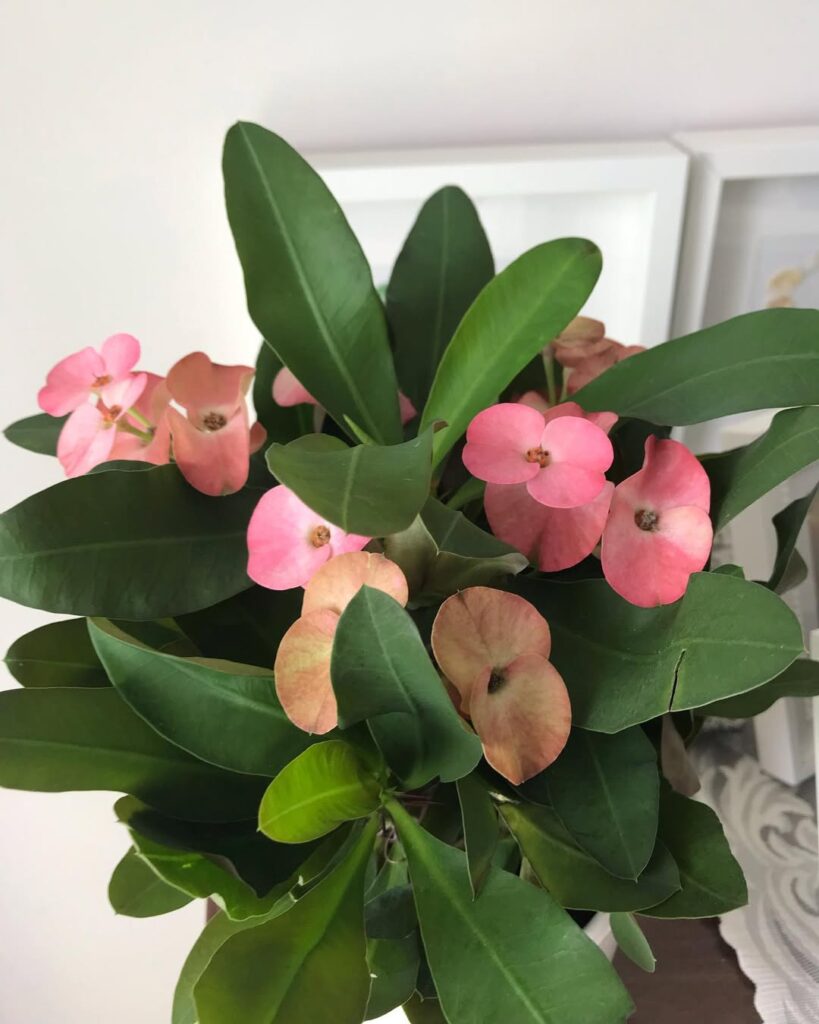
One of the most popular indoor Euphorbias, Crown of Thorns is loved for its bright, long-lasting flowers. It has thorny stems and small green leaves, making it a striking addition to any space. This plant thrives in bright light and can handle dry conditions, making it perfect for busy plant lovers.
African Milk Tree (Euphorbia trigona)
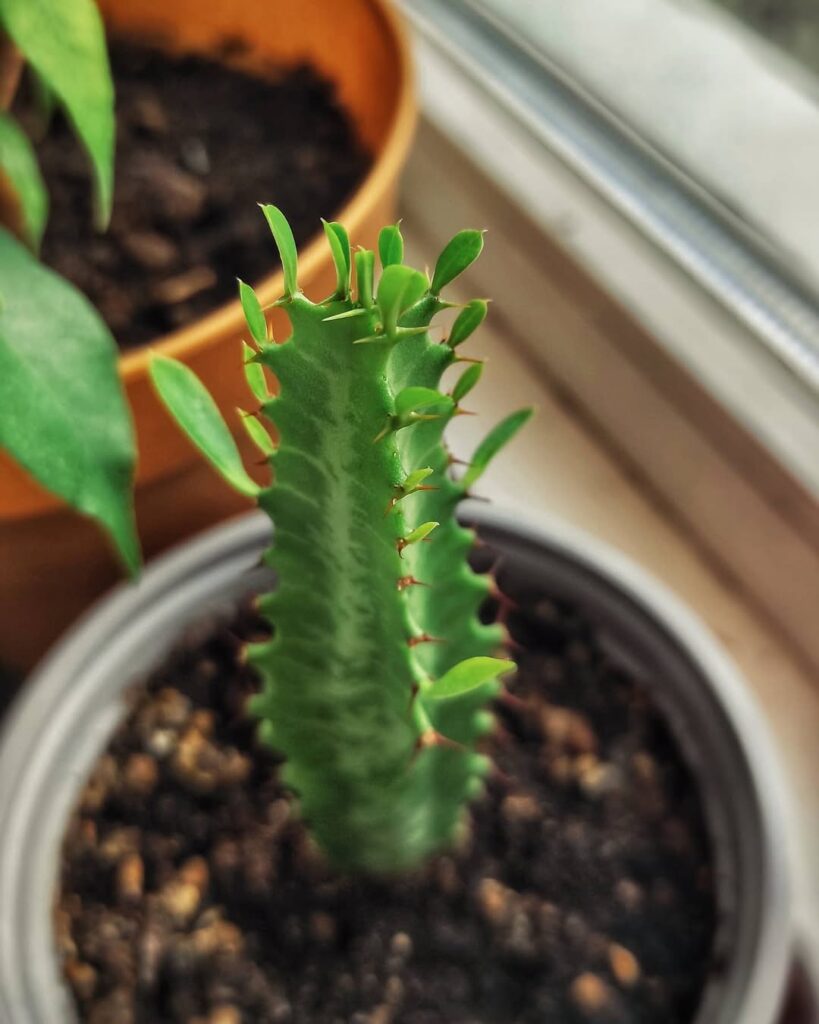
This tall, branching succulent looks dramatic indoors. African Milk Tree grows upright, with triangular stems covered in small spines. With enough sunlight, it can reach impressive heights! It’s a hardy plant that needs very little water, making it a great choice for beginners.
Pencil Cactus (Euphorbia tirucalli)
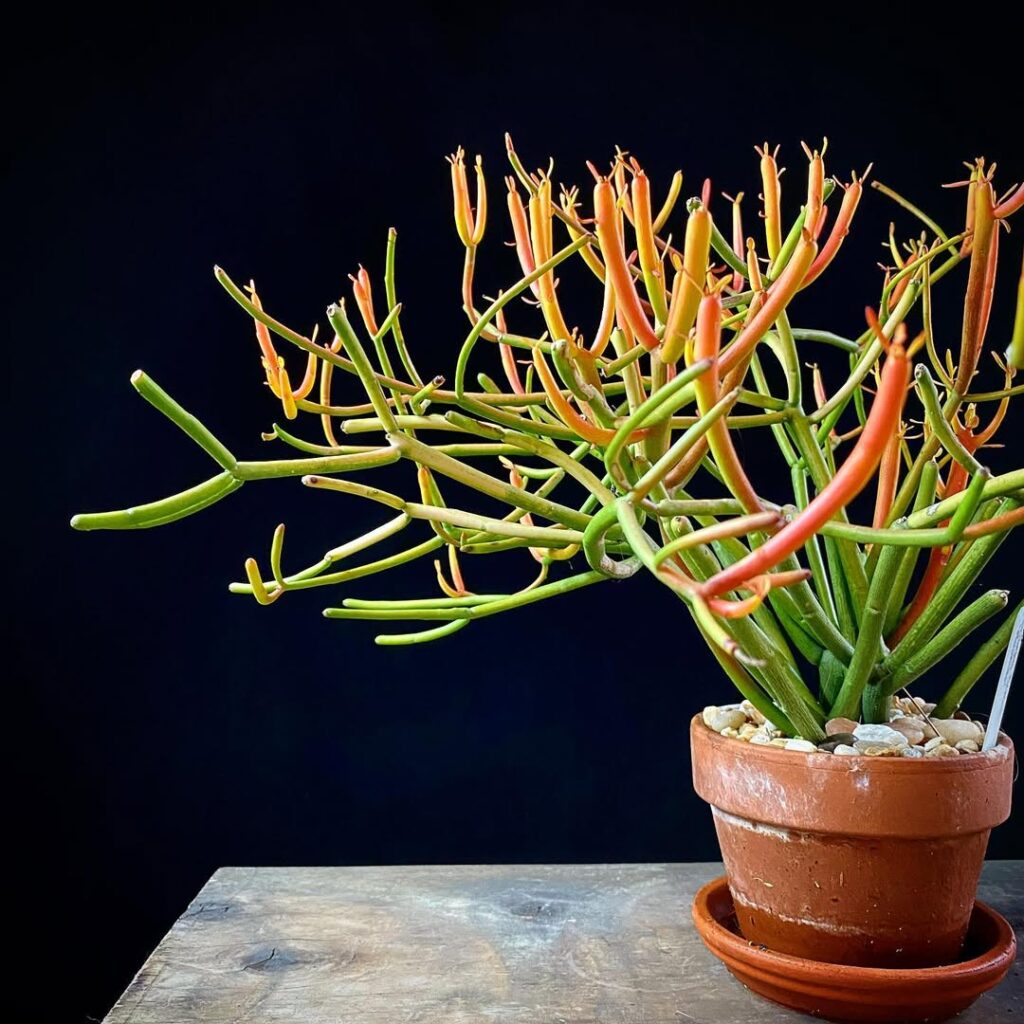
Looking for something unique? Pencil Cactus is a Euphorbia with thin, stick-like branches. In bright light, its stems can turn reddish-orange, adding warmth to your indoor space. Just be careful—the milky sap can be irritating to the skin, so handle with care!
Basketball Euphorbia (Euphorbia obesa)

This round, compact plant resembles a small green ball. Basketball Euphorbia is an easy-care succulent with a fun shape and minimal needs. It loves bright, indirect light and only needs occasional watering, making it ideal for plant collectors who prefer unusual shapes.
Dragon Bones Tree (Euphorbia lactea)
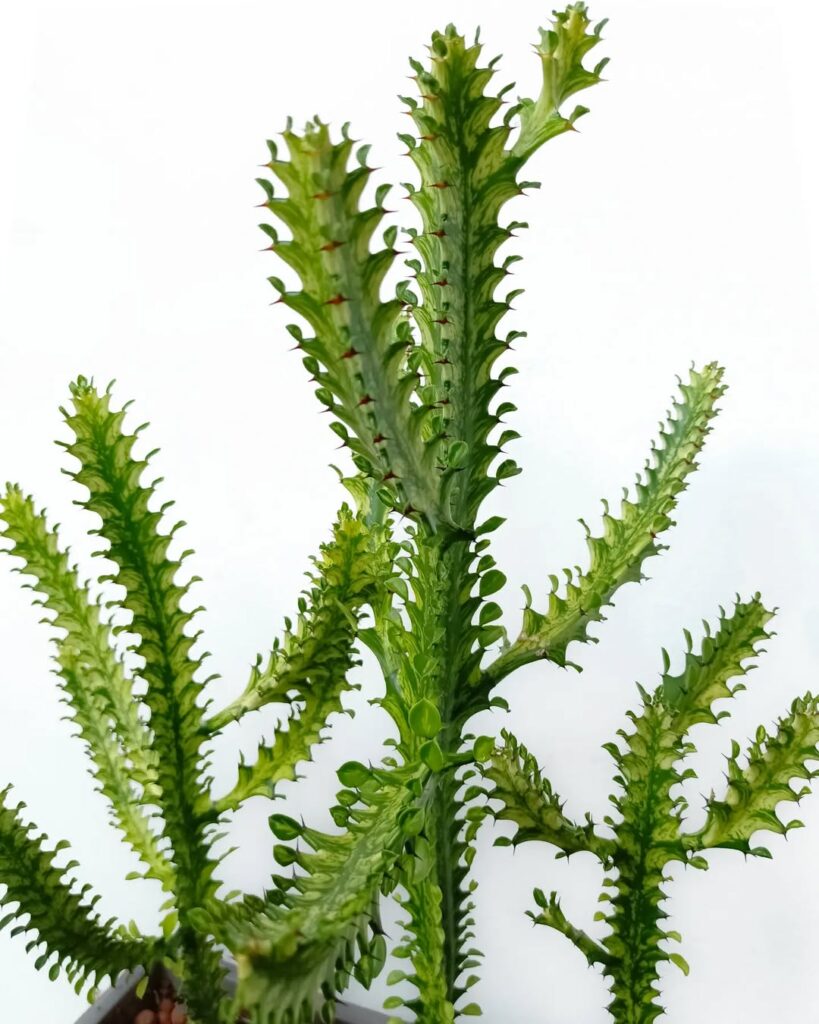
If you want something bold, Dragon Bones Tree is a Euphorbia with upright stems that resemble stacked bones. It has beautiful green coloring with pale markings in the center. This plant does well in bright, warm conditions and doesn’t need frequent watering.
Devil’s Backbone (Euphorbia tithymaloides)
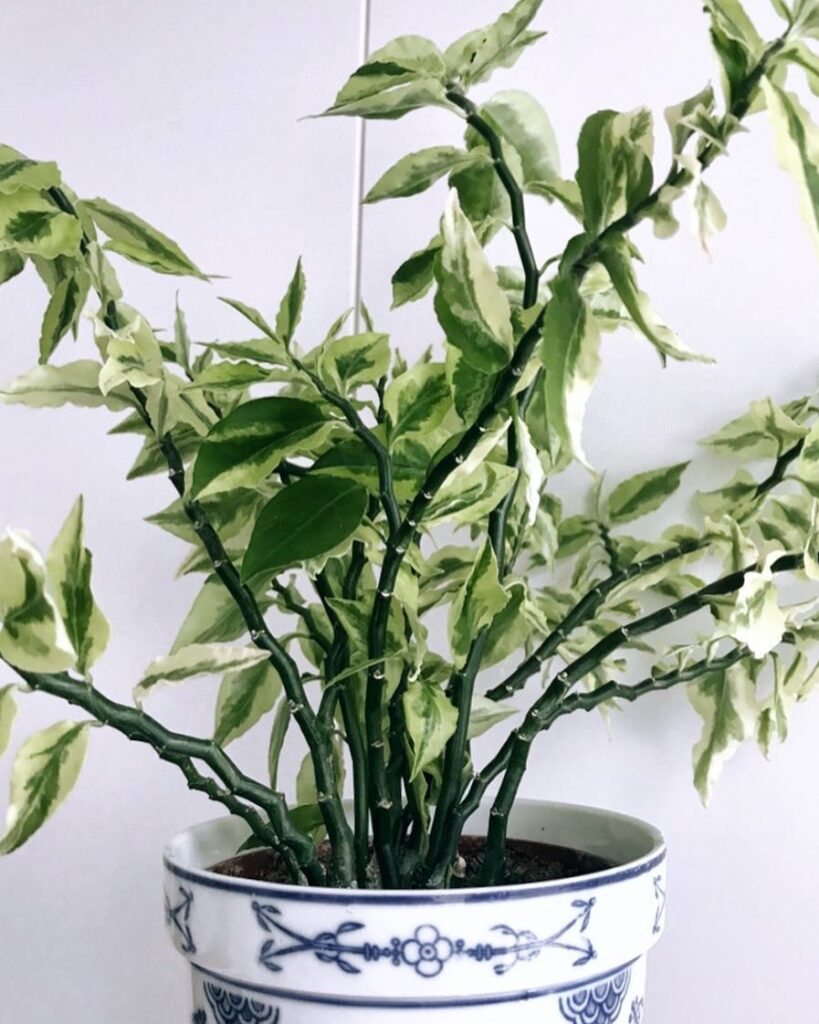
Unlike most Euphorbias, Devil’s Backbone has actual leaves! Its zigzagging stems and colorful foliage make it a fun choice for an indoor garden. While it loves bright light, it can tolerate lower light levels better than some other Euphorbia varieties.
Medusa’s Head (Euphorbia flanaganii)
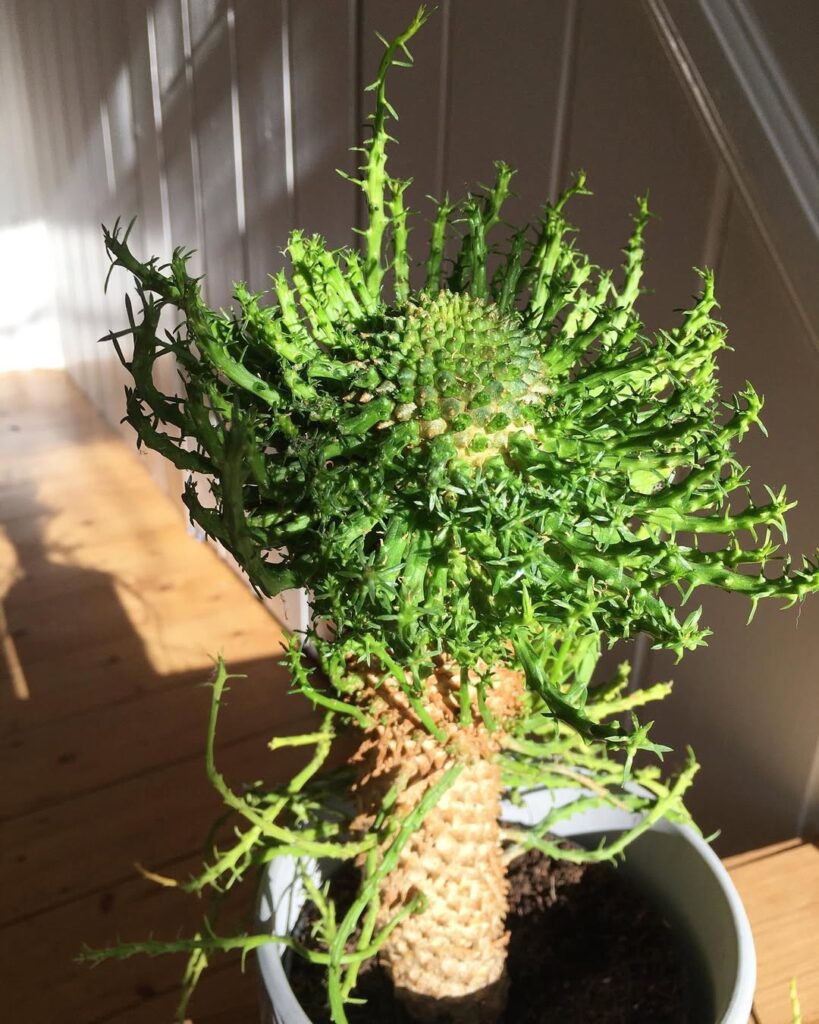
This low-growing plant is truly unique. Medusa’s Head features a central base with long, twisting stems that spread outward. It’s perfect for adding an exotic touch to your indoor plant collection. Just give it bright light and occasional watering, and it will thrive.
Candelabra Tree (Euphorbia ingens)
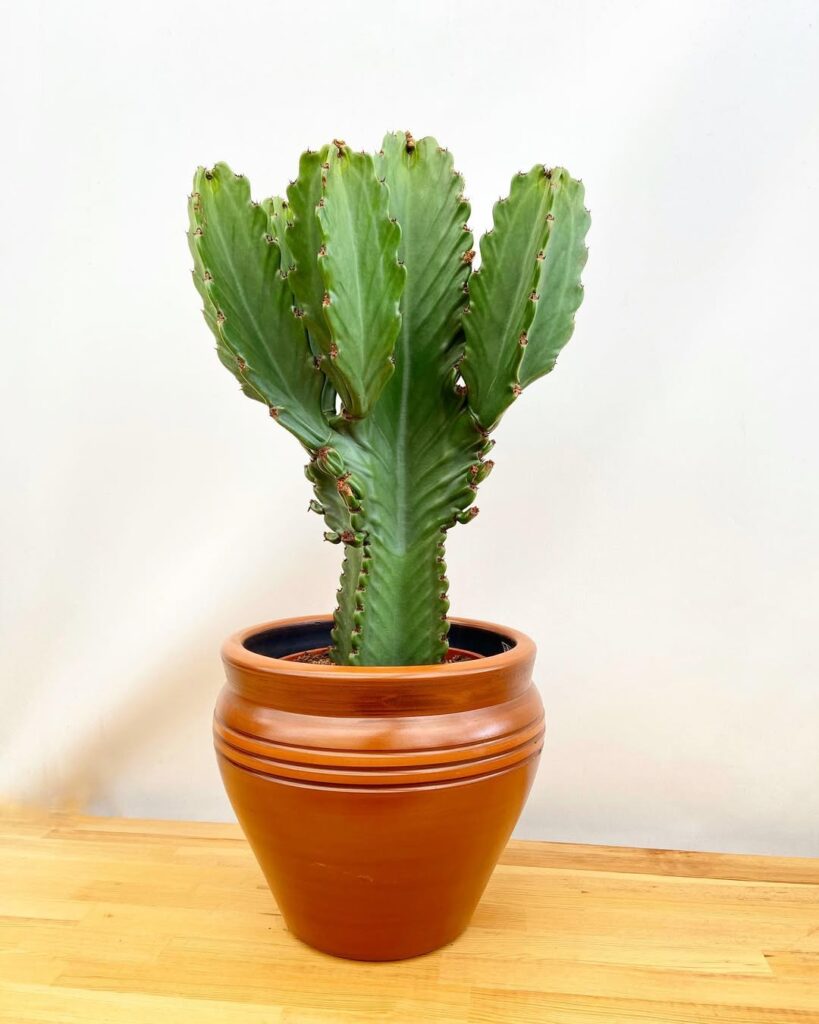
A tall, branching succulent, Candelabra Tree has thick, upright stems that resemble a traditional candelabra. It can grow quite large indoors, though it needs plenty of bright light to stay healthy.
Desert Candle (Euphorbia ammak)
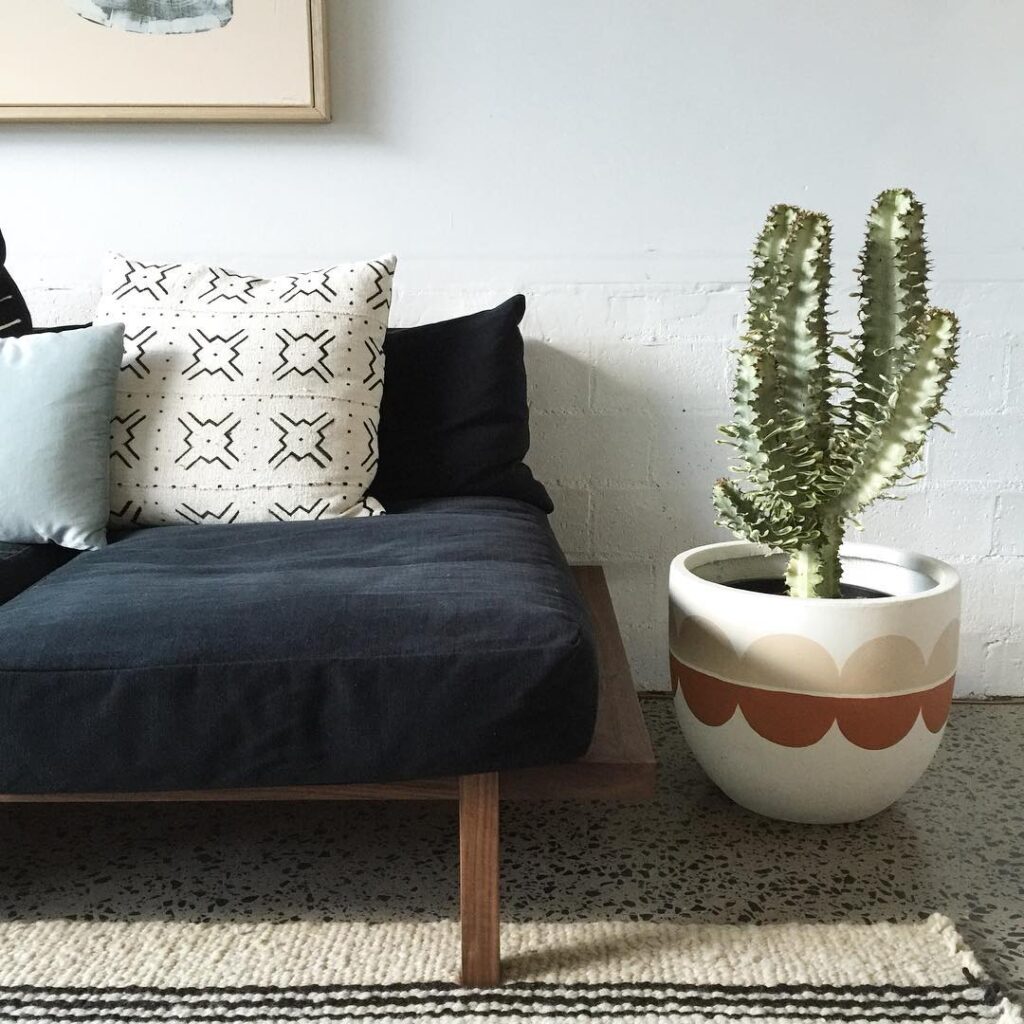
Similar to the Candelabra Tree, Desert Candle has vertical, column-like stems that feature beautiful yellow-green coloring. It’s easy to grow indoors, but make sure it gets lots of light and proper drainage.
Euphorbia horrida
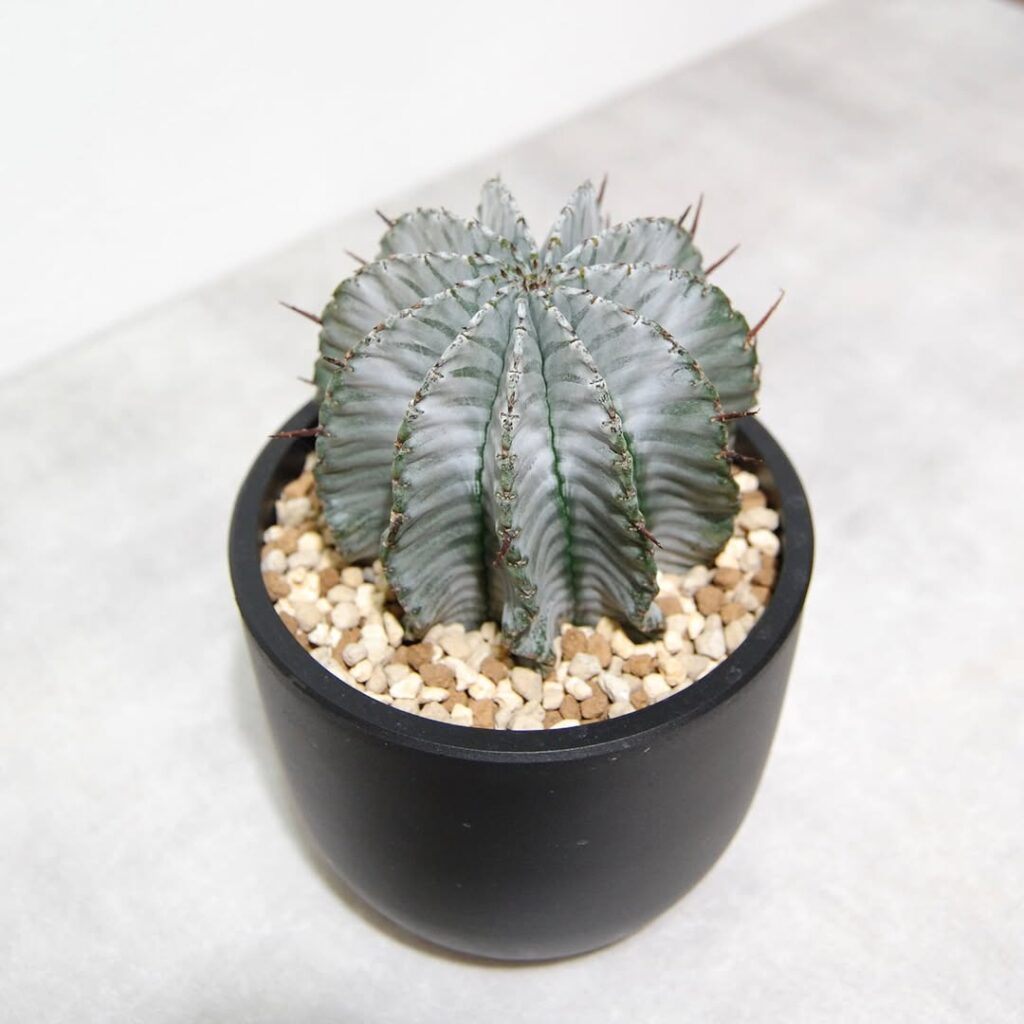
Looking almost like a cactus, Euphorbia horrida has spiny, blue-green stems that grow upright. It thrives in bright, dry environments and requires little watering.
Indian Corn Cob (Euphorbia mammillaris)
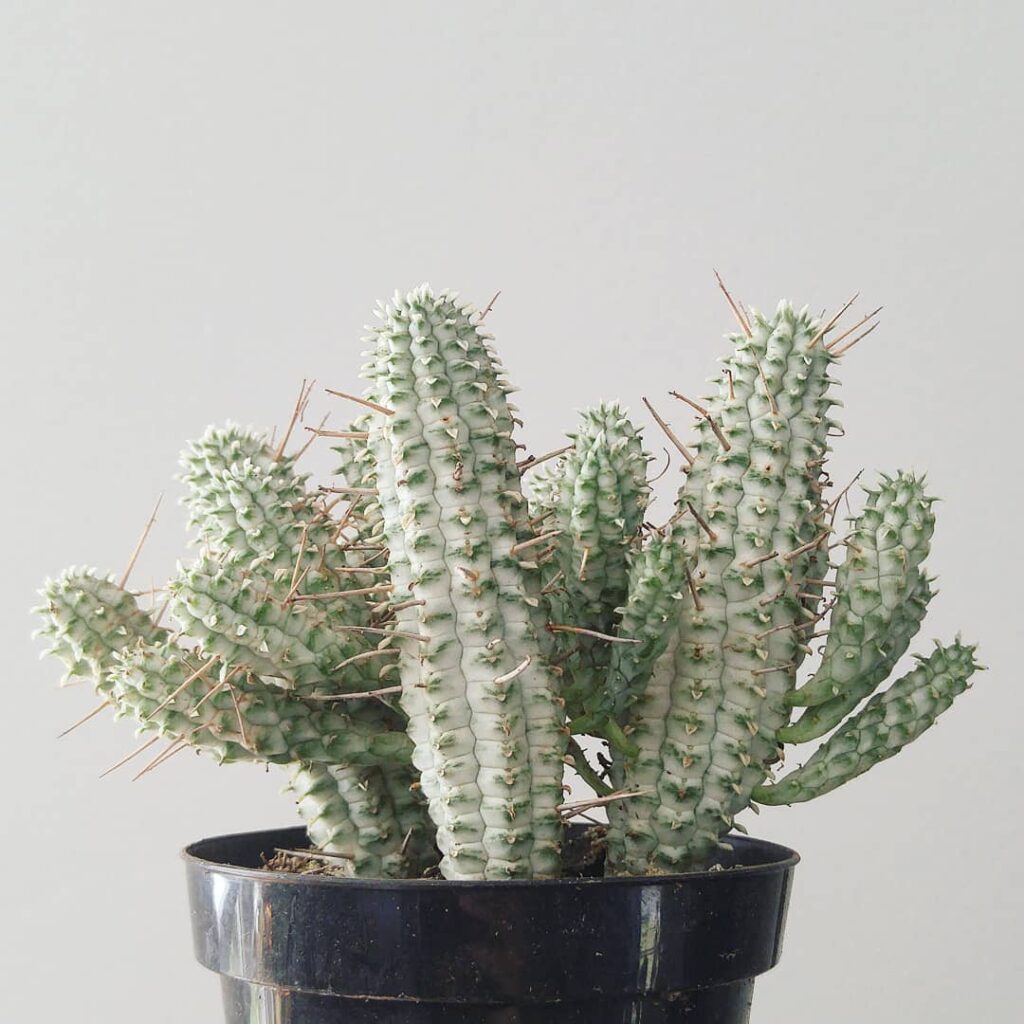
This plant has a compact, textured surface that gives it a corn cob-like appearance. Indian Corn Cob is a resilient succulent that looks great in small containers.
Euphorbia bupleurifolia
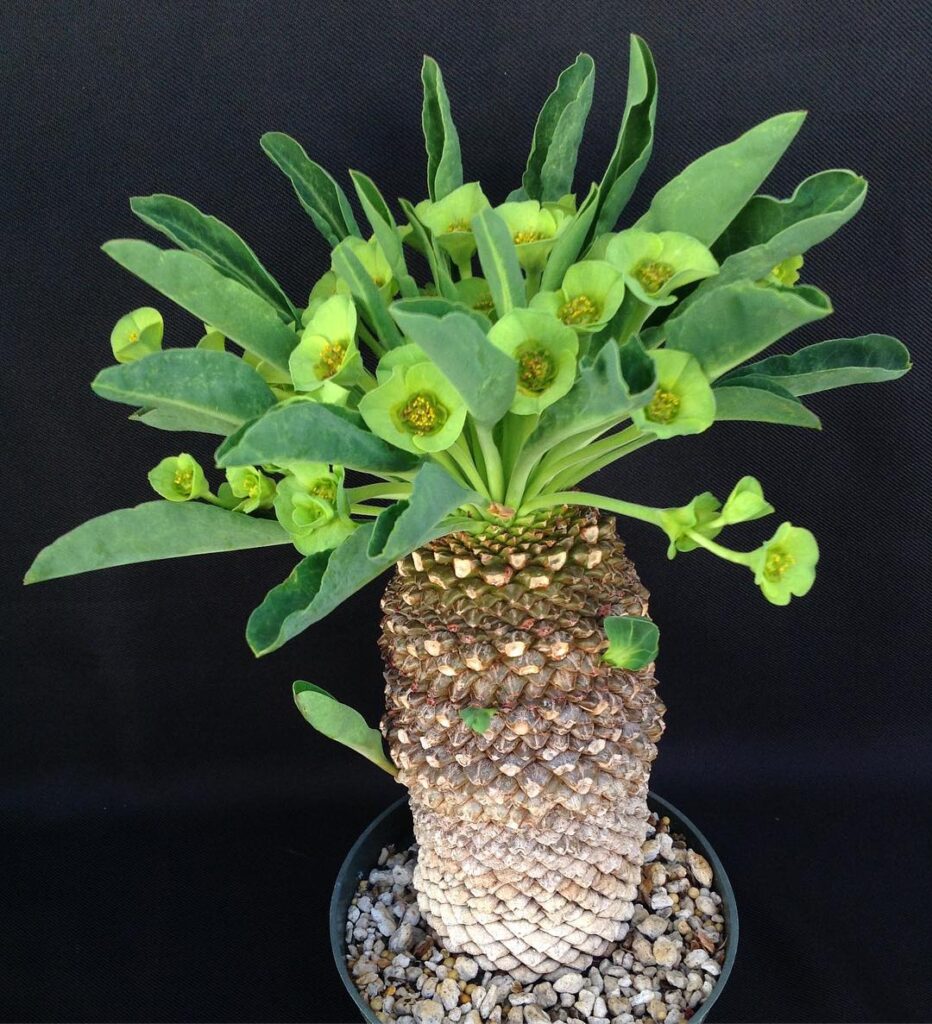
A unique Euphorbia with a thick, woody caudex base, Euphorbia bupleurifolia is small but fascinating. It does well in warm, dry conditions with bright light exposure.
Euphorbia resinifera
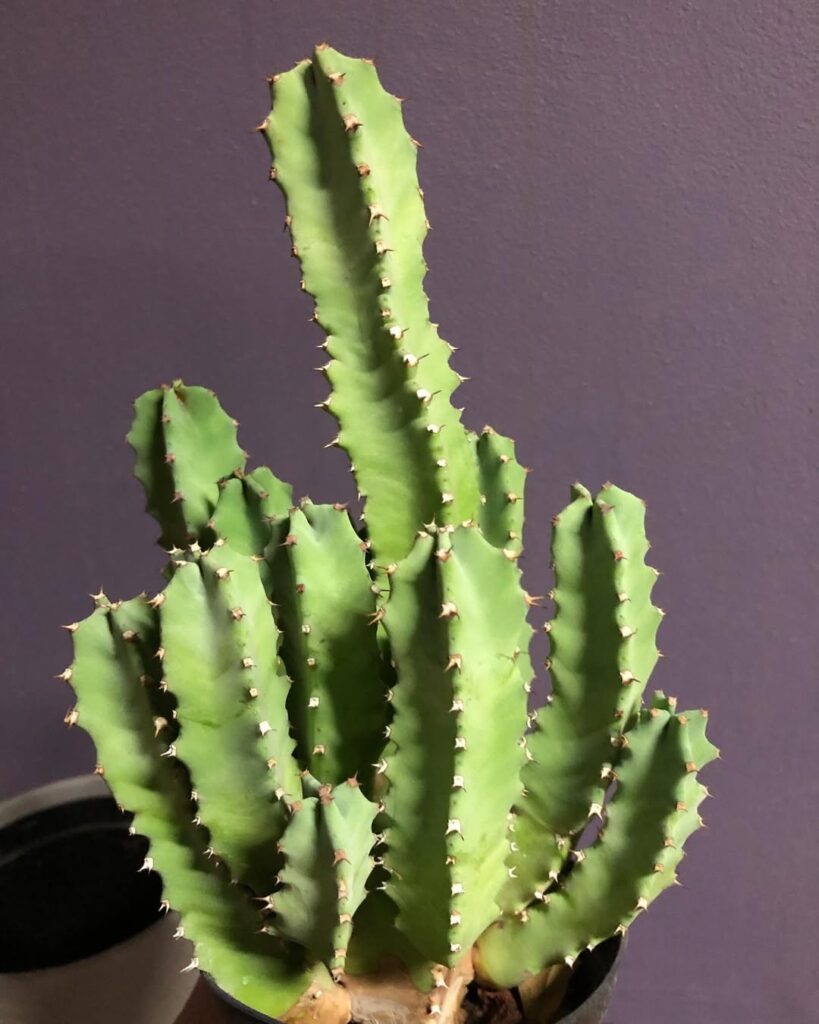
With thick, clustered stems, Euphorbia resinifera creates a beautiful sculptural look in any indoor space. It grows slowly but is very easy to maintain.
Euphorbia suzannae
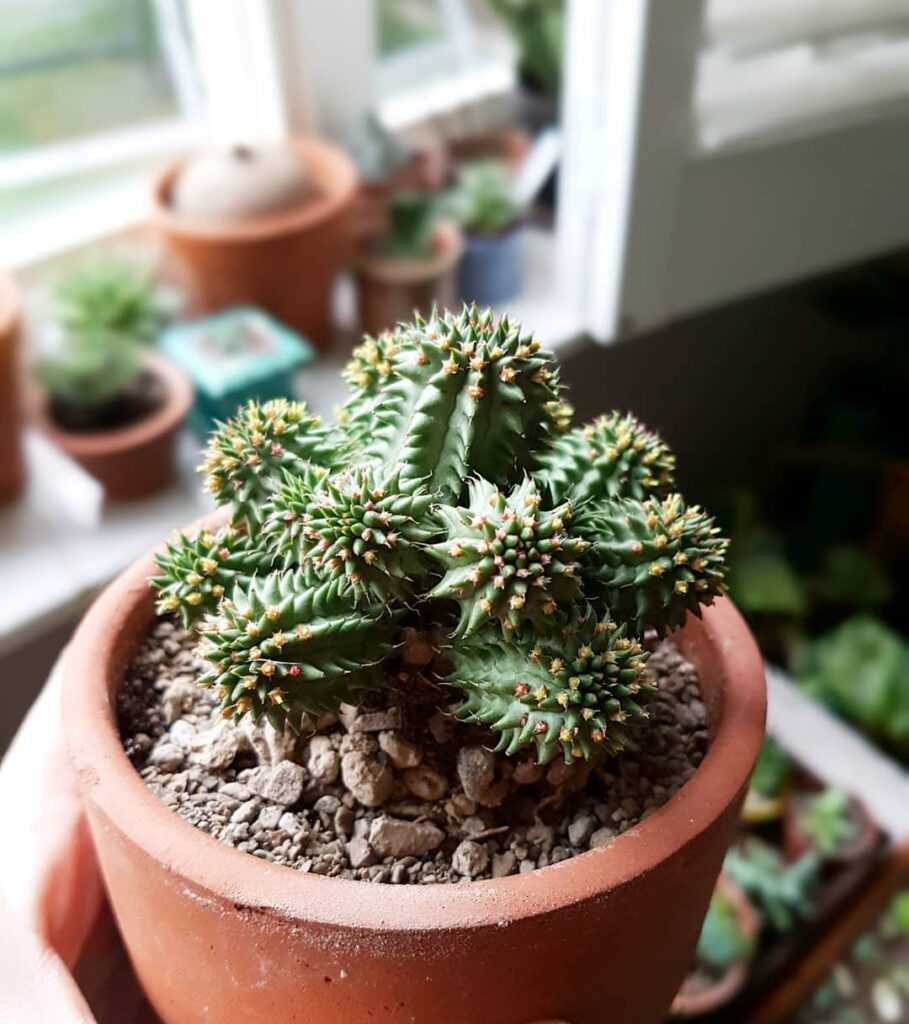
A low-growing, mound-forming succulent, Euphorbia suzannae has soft, curved stems and thrives in containers with good drainage and bright light.
Euphorbia francoisii
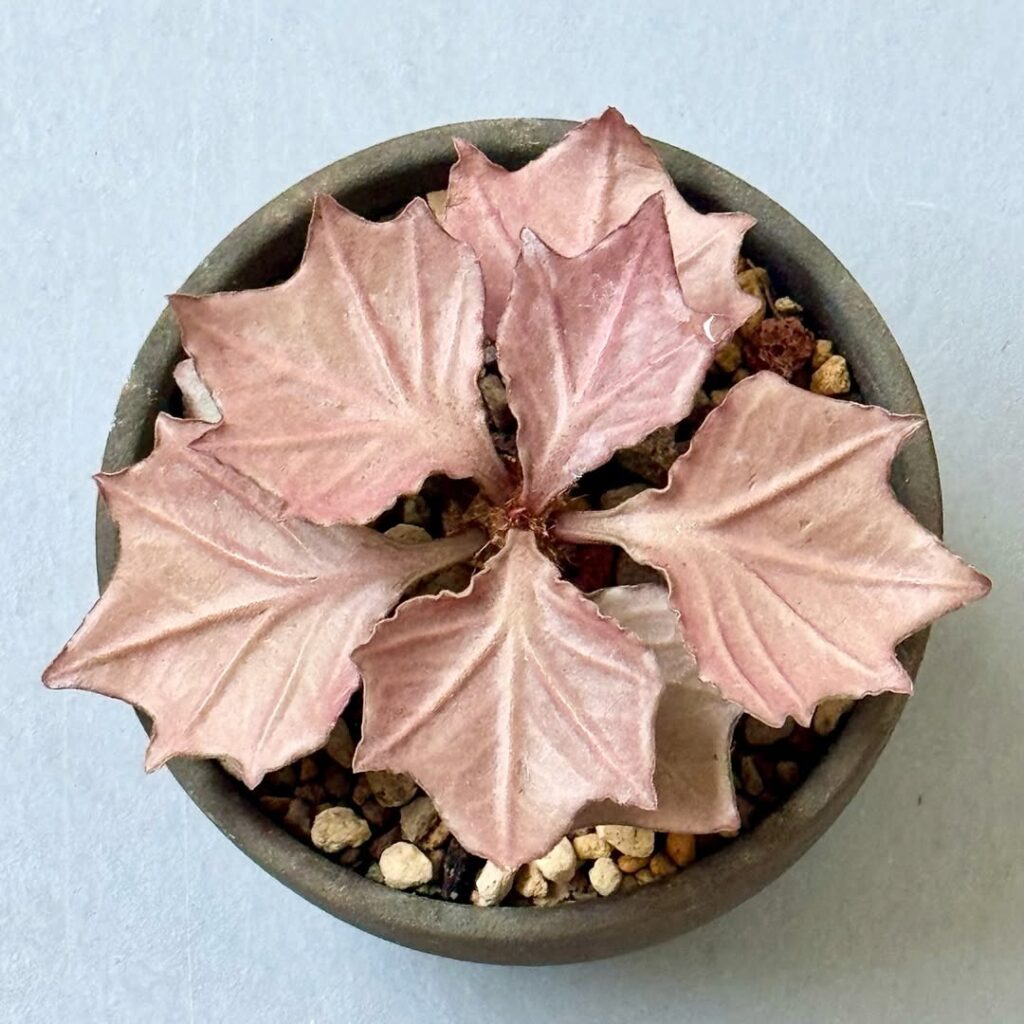
This rare Euphorbia is prized for its decorative, wavy leaves and compact growth habit. Euphorbia francoisii needs bright light but doesn’t require much watering.
Euphorbia poissonii
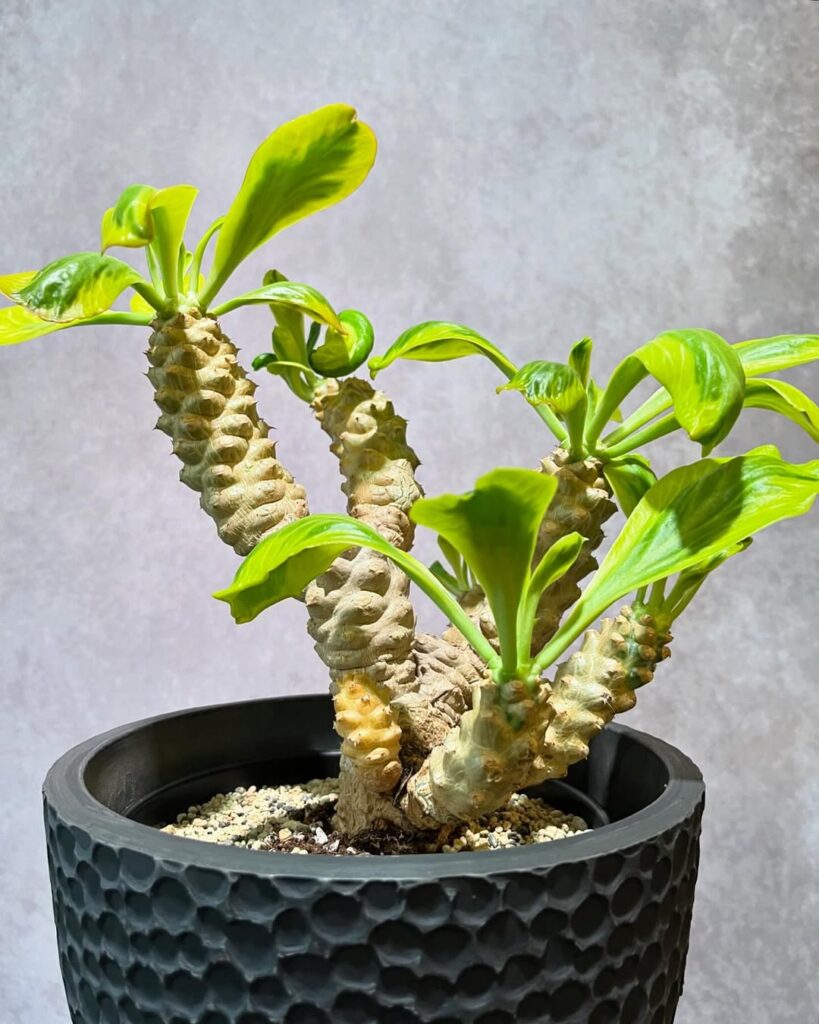
Featuring vertical stems with slight ridges, Euphorbia poissonii is easy to care for indoors. It thrives in bright, indirect light and dry soil.
Euphorbia ferox
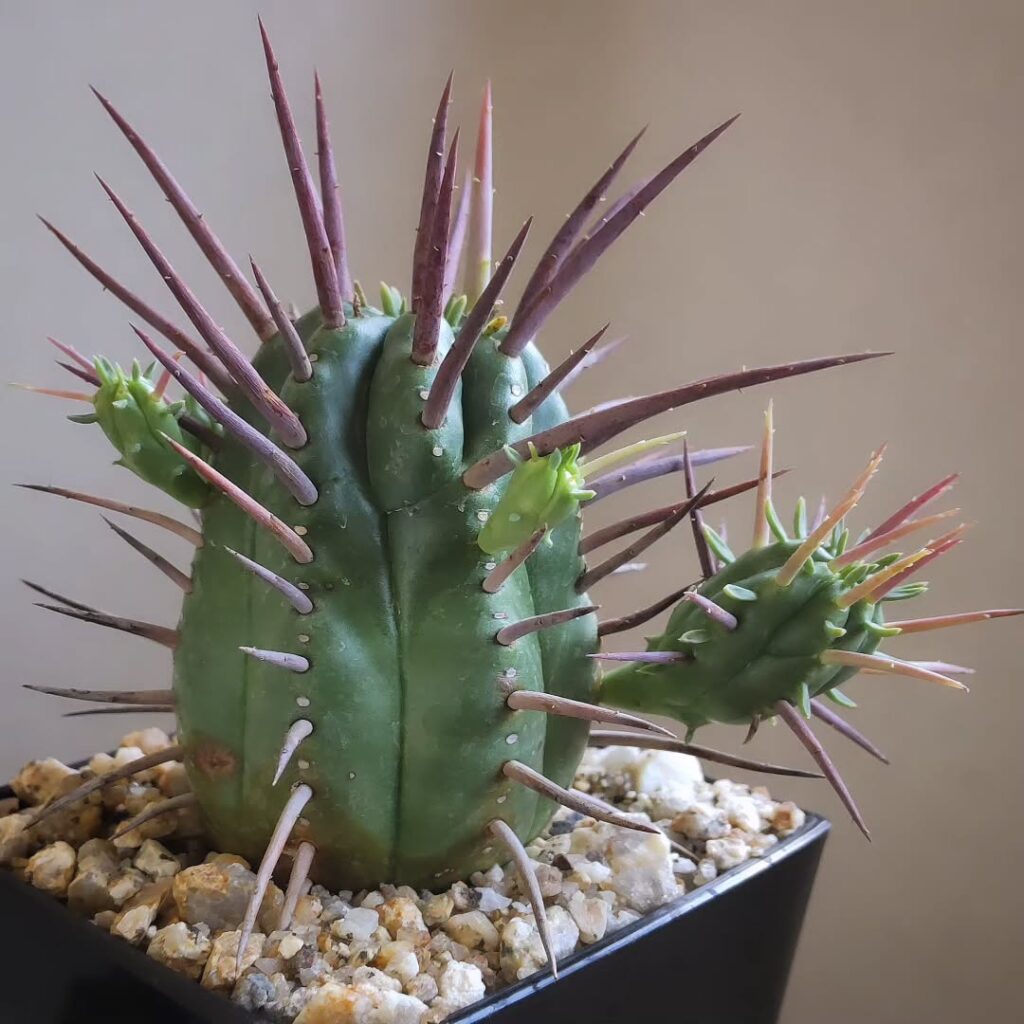
With its spiny, compact structure, Euphorbia ferox resembles a miniature cactus and does well in bright indoor spaces.
Euphorbia cylindrifolia
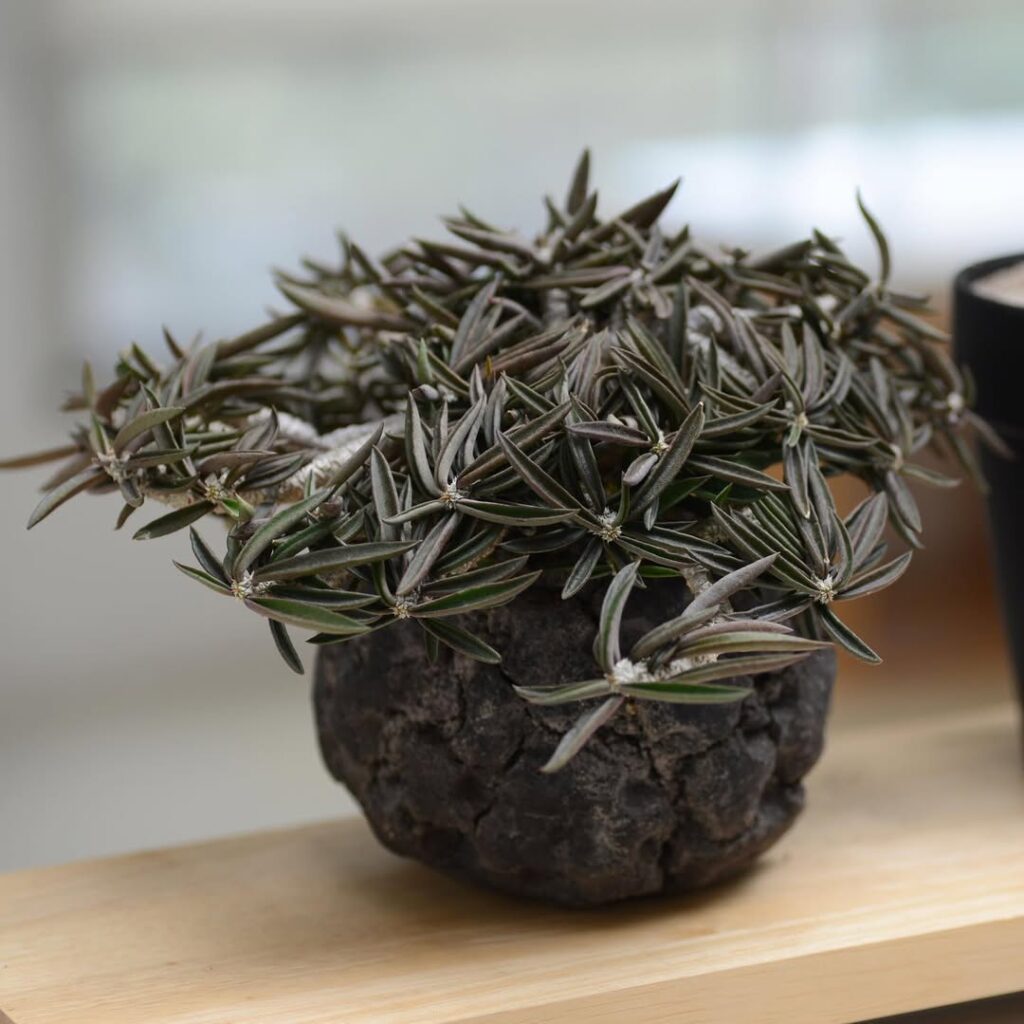
A low-growing succulent, Euphorbia cylindrifolia forms dense clusters of slender stems, making it a great choice for small pots.
Euphorbia caput-medusae
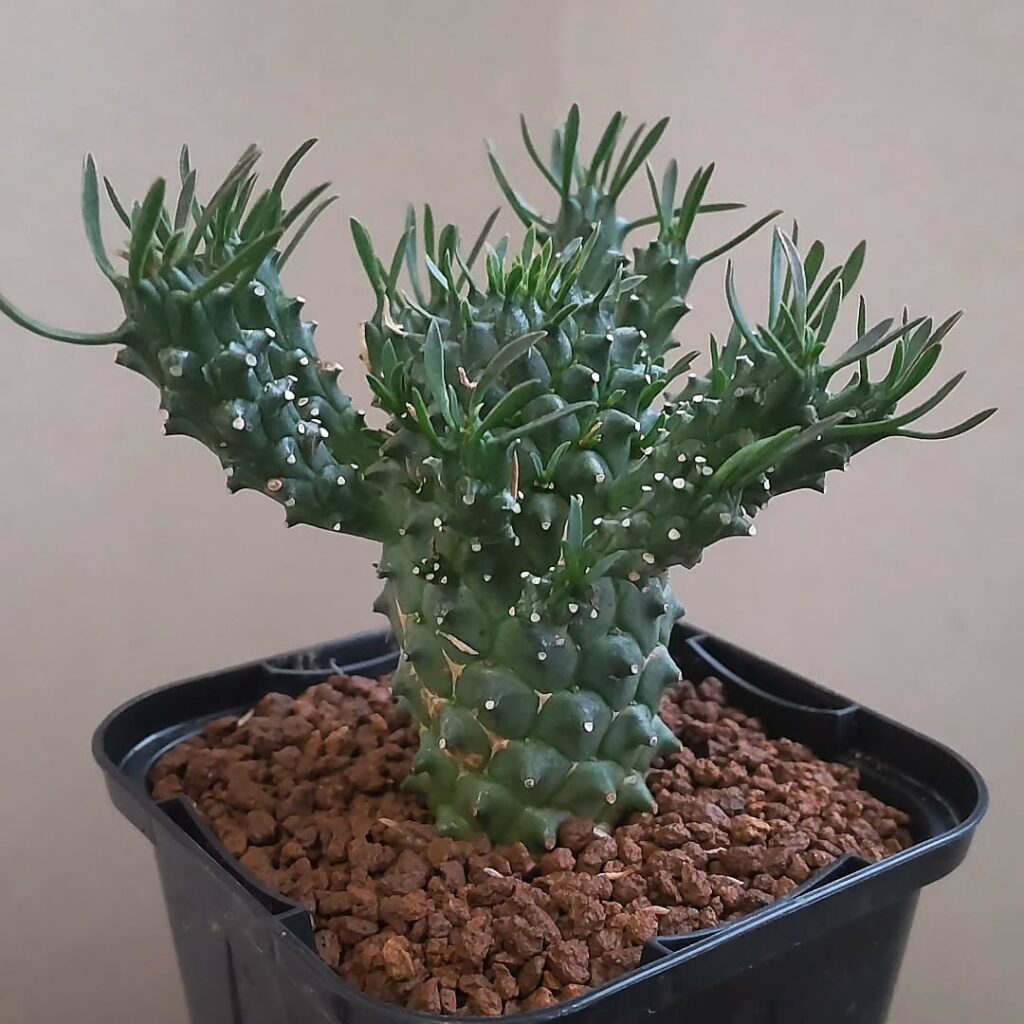
Its sprawling, snake-like stems give Euphorbia caput-medusae a dramatic and exotic look, making it an interesting addition to indoor collections.
Euphorbia echinus

A rounded, spiny succulent, Euphorbia echinus thrives in dry conditions and adds a sculptural look to indoor displays.
Euphorbia gymnocalycioides
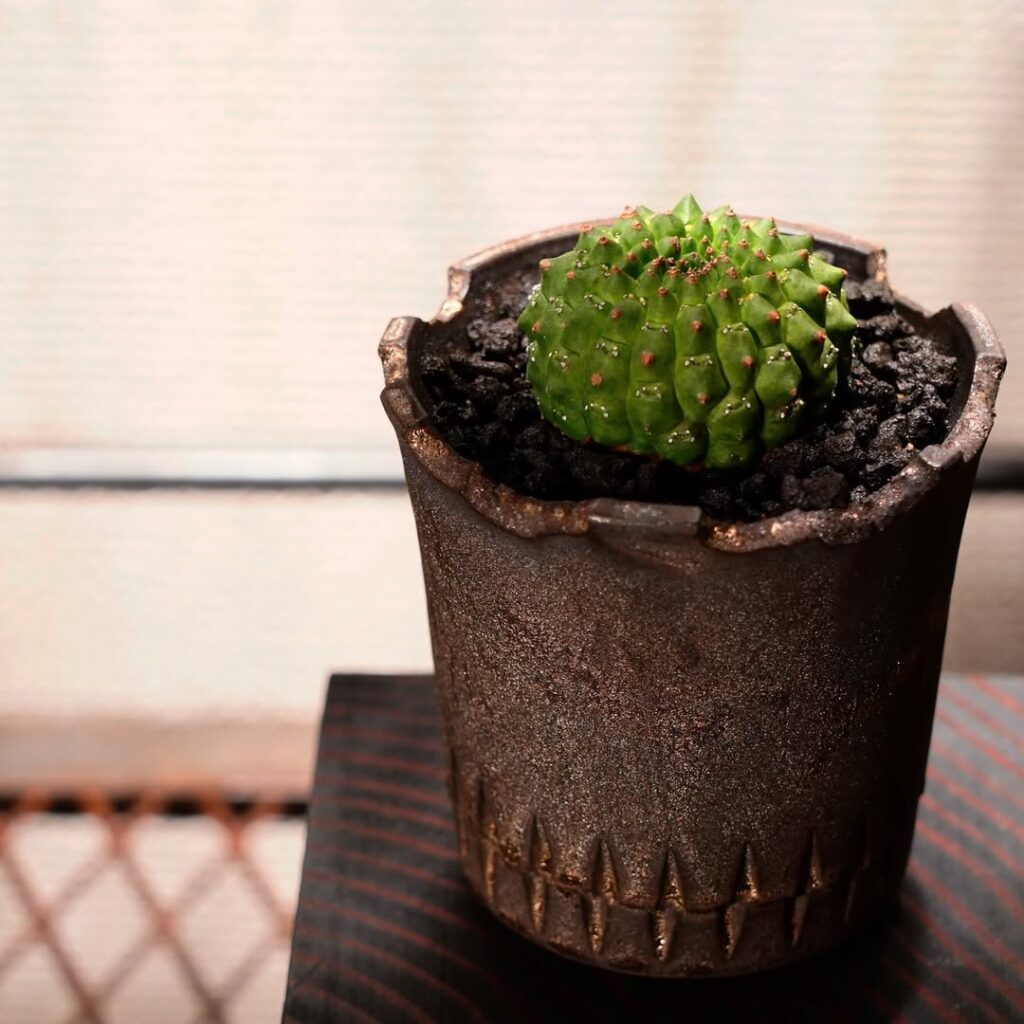
This rare Euphorbia has unique, globular growth and looks almost like a small cactus, needing bright light and minimal watering.
Euphorbia decaryi

A trailing succulent with wavy, textured leaves, Euphorbia decaryi adds a softer, more delicate touch to indoor gardens.
Euphorbia monadenium
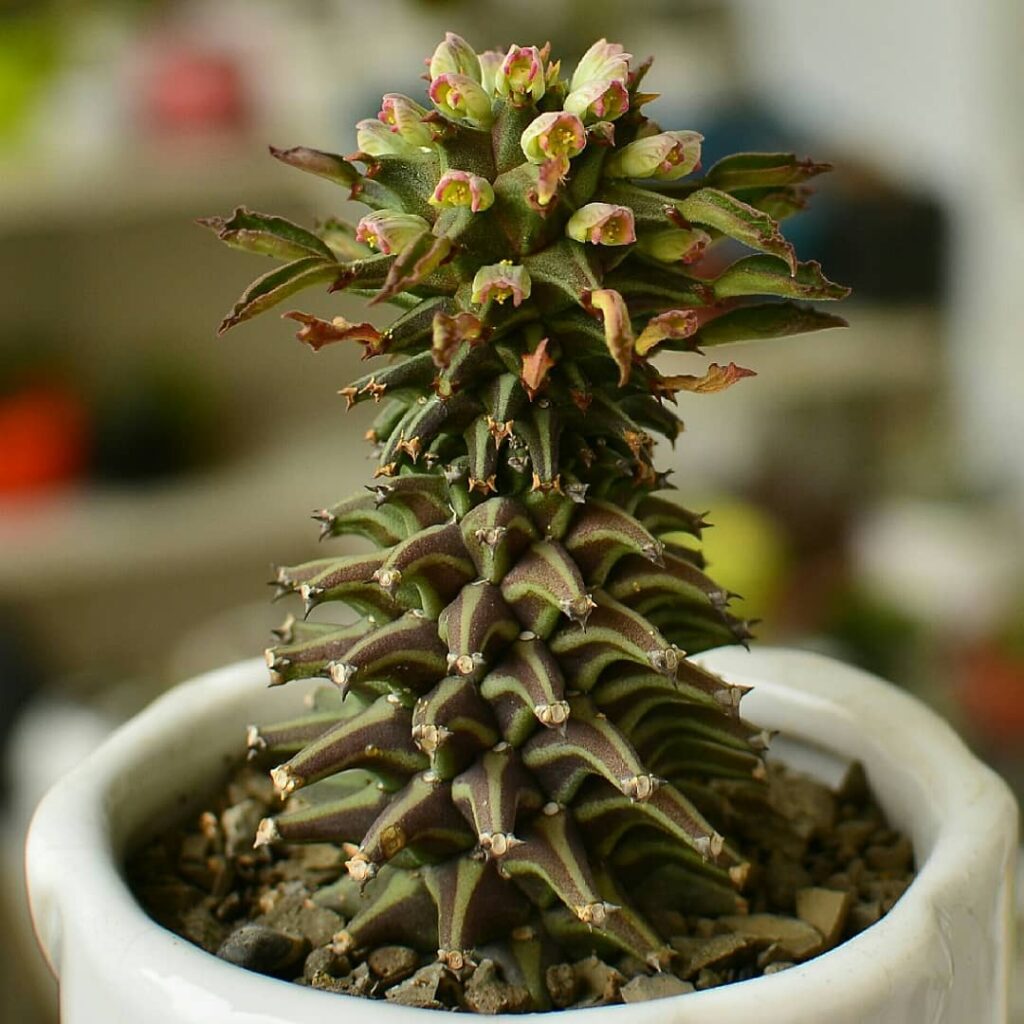
Known for its unusual branching pattern, Euphorbia monadenium creates a striking architectural shape indoors.
Euphorbia stenoclada
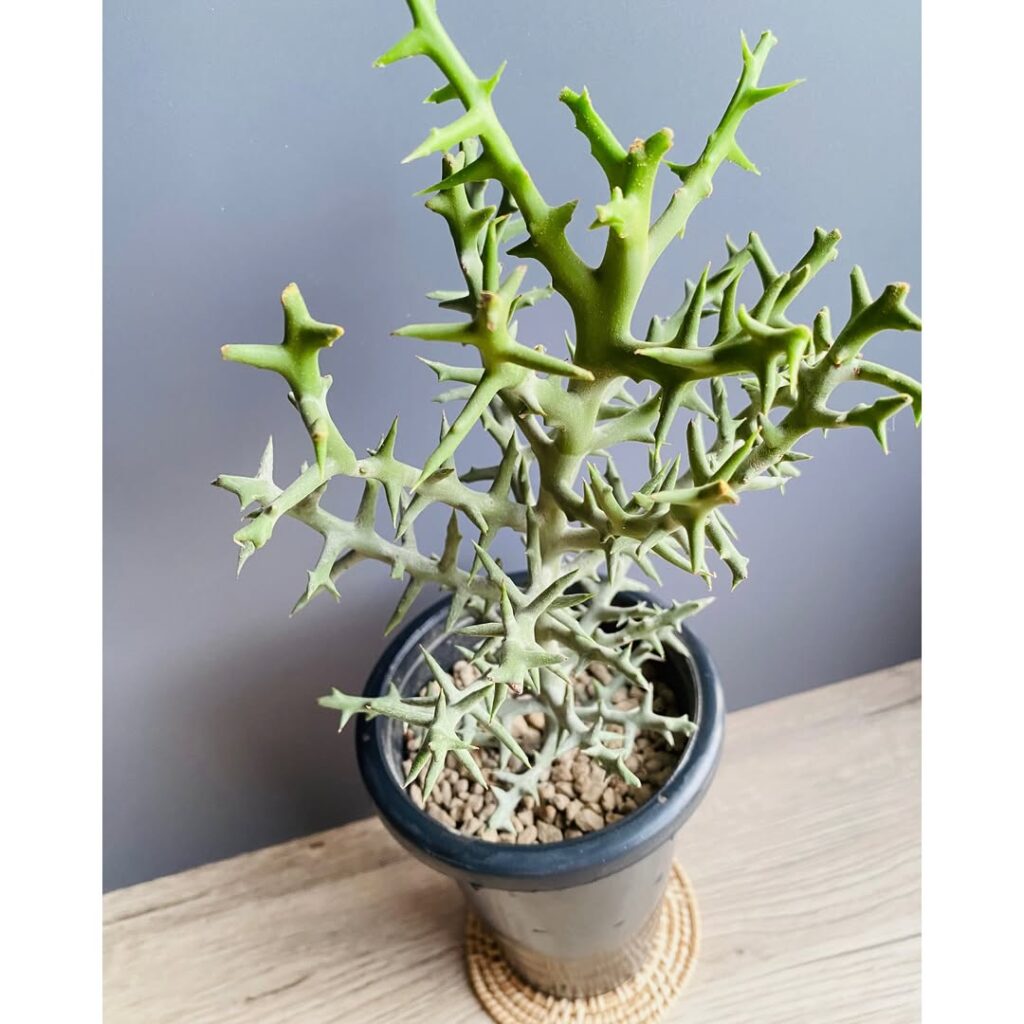
With silvery-gray stems and sharp angles, Euphorbia stenoclada has an elegant, sculptural look perfect for bright indoor spaces.
Euphorbia viguieri
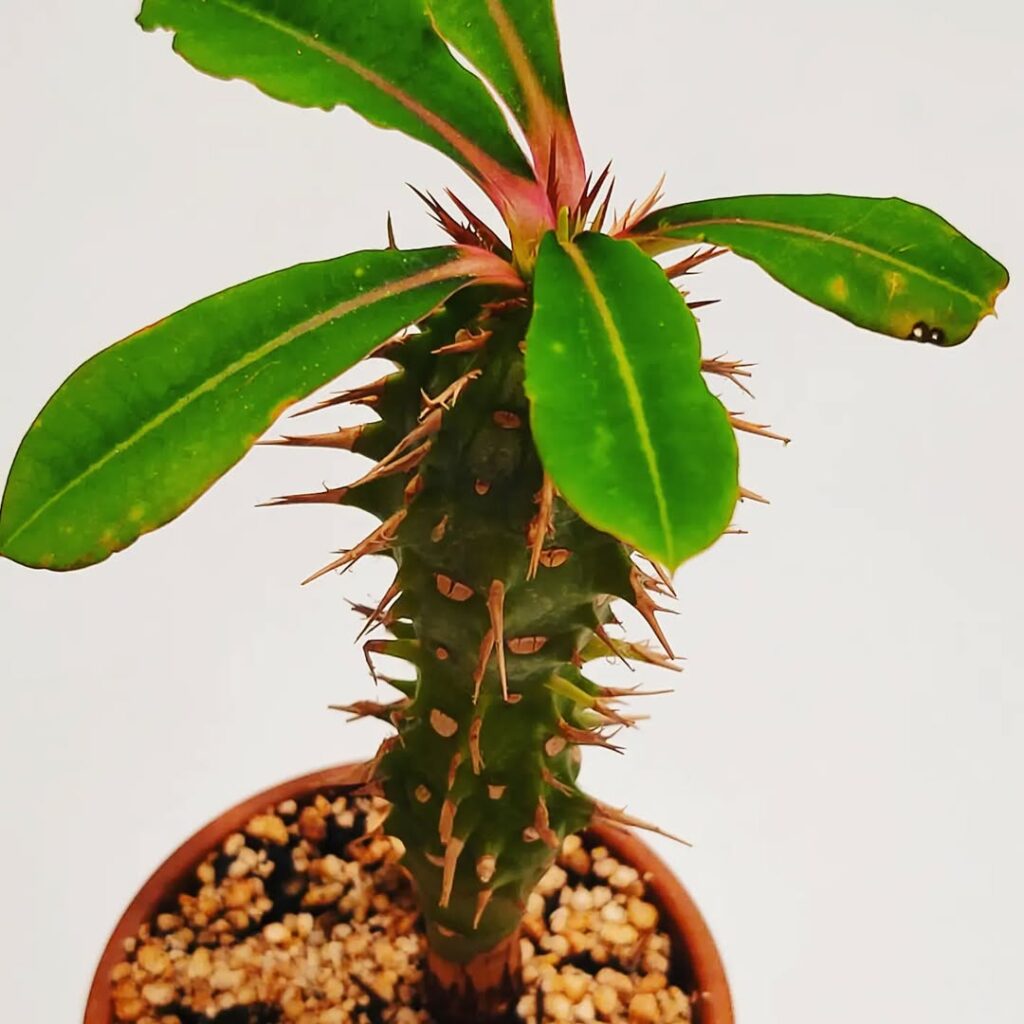
This Euphorbia is prized for its thick stems and seasonal foliage that appears in warmer months before shedding.
Euphorbia knuthii
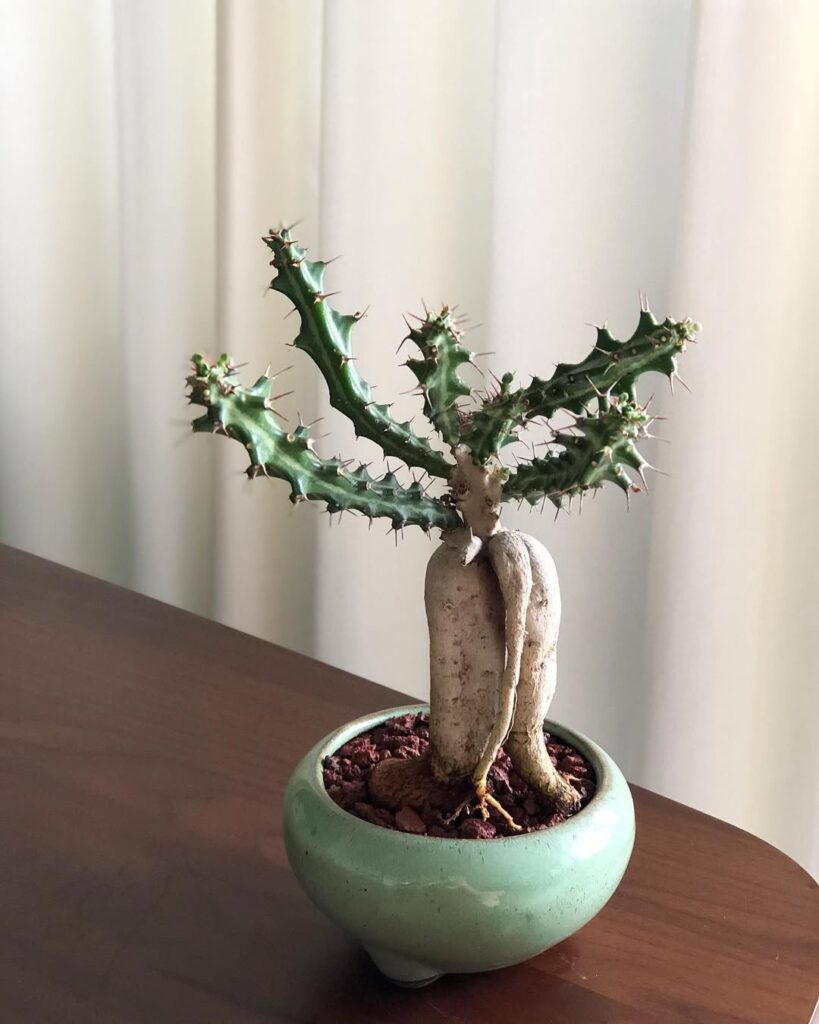
A hardy succulent with tuberous roots, Euphorbia knuthii is well-suited for indoor conditions and makes a great addition to succulent collections.
Euphorbia ambovombensis
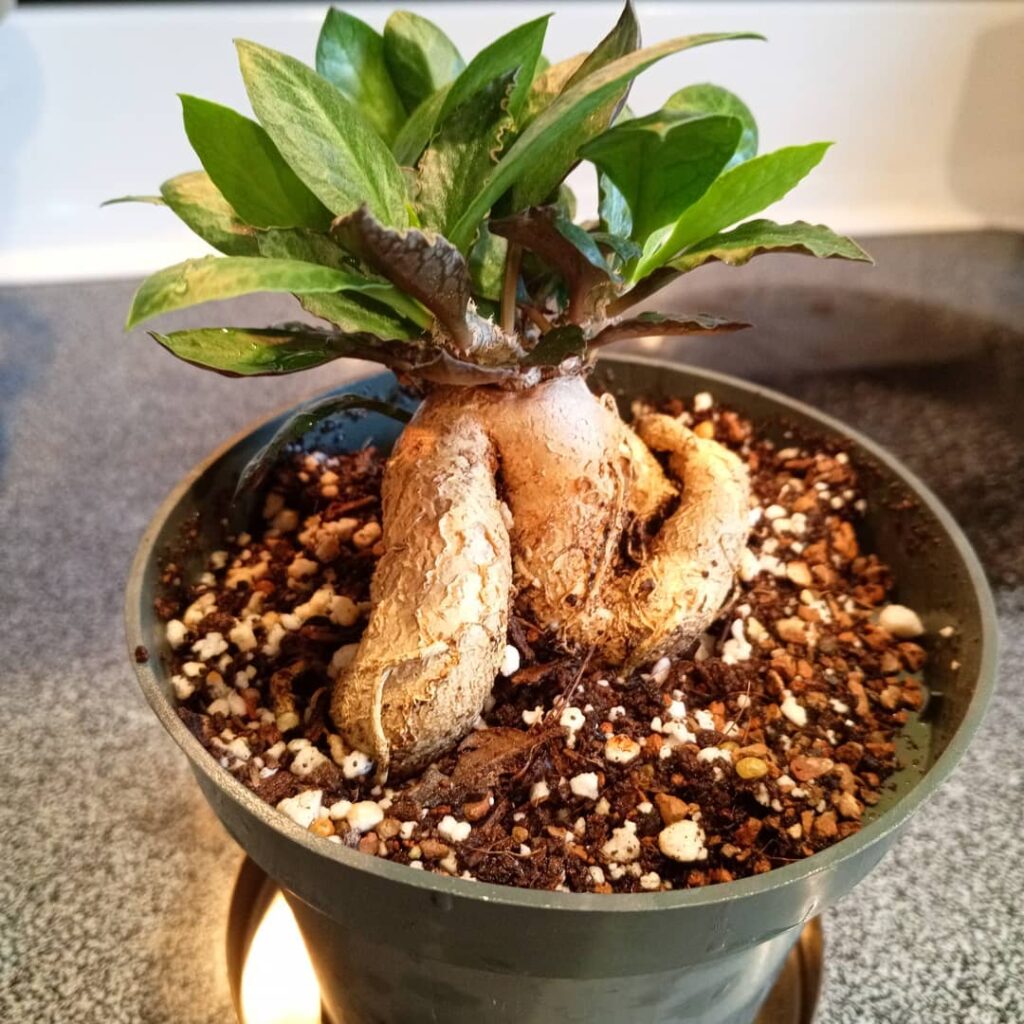
This compact Euphorbia forms thick, knotted stems and thrives in containers with good drainage and bright light.
Euphorbia enopla
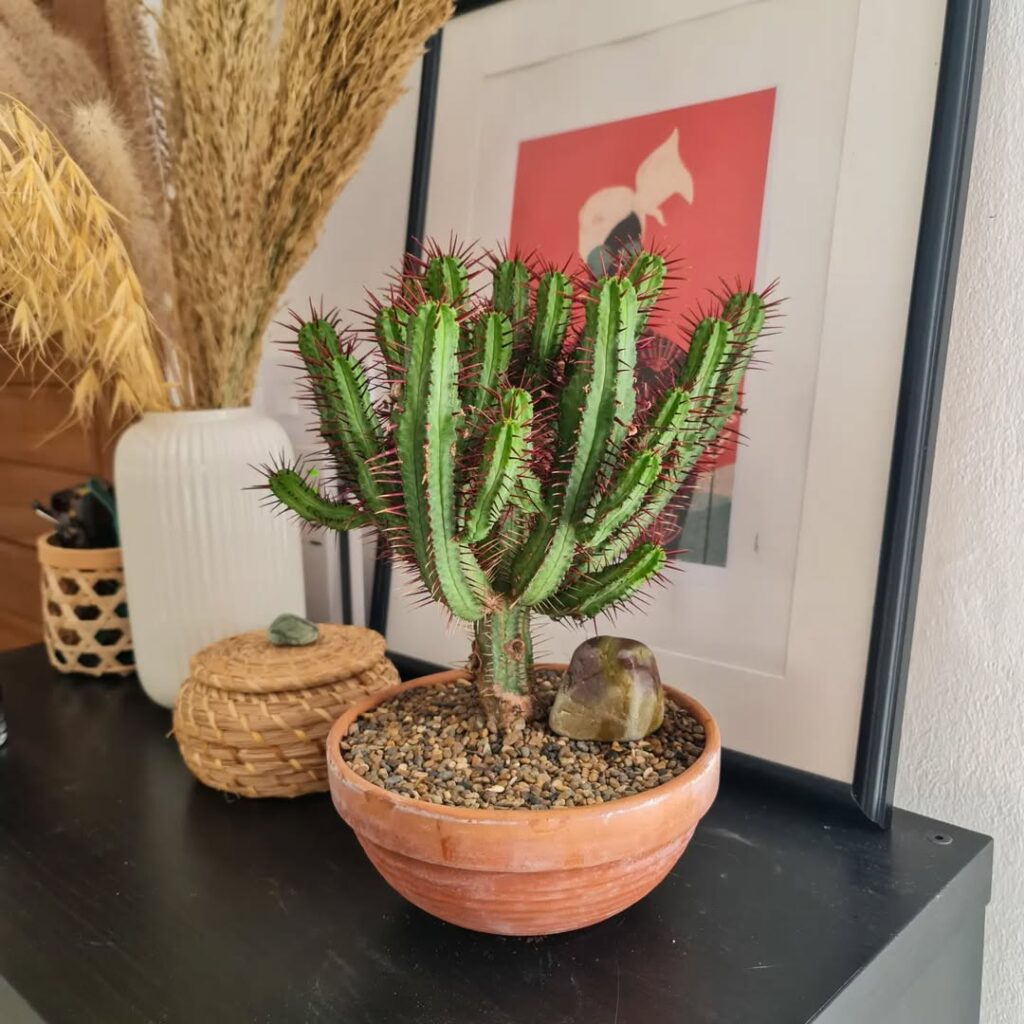
With its deep green stems and reddish spines, Euphorbia enopla adds bold texture to indoor plant arrangements.
Euphorbia leucocephala (Snowbush)
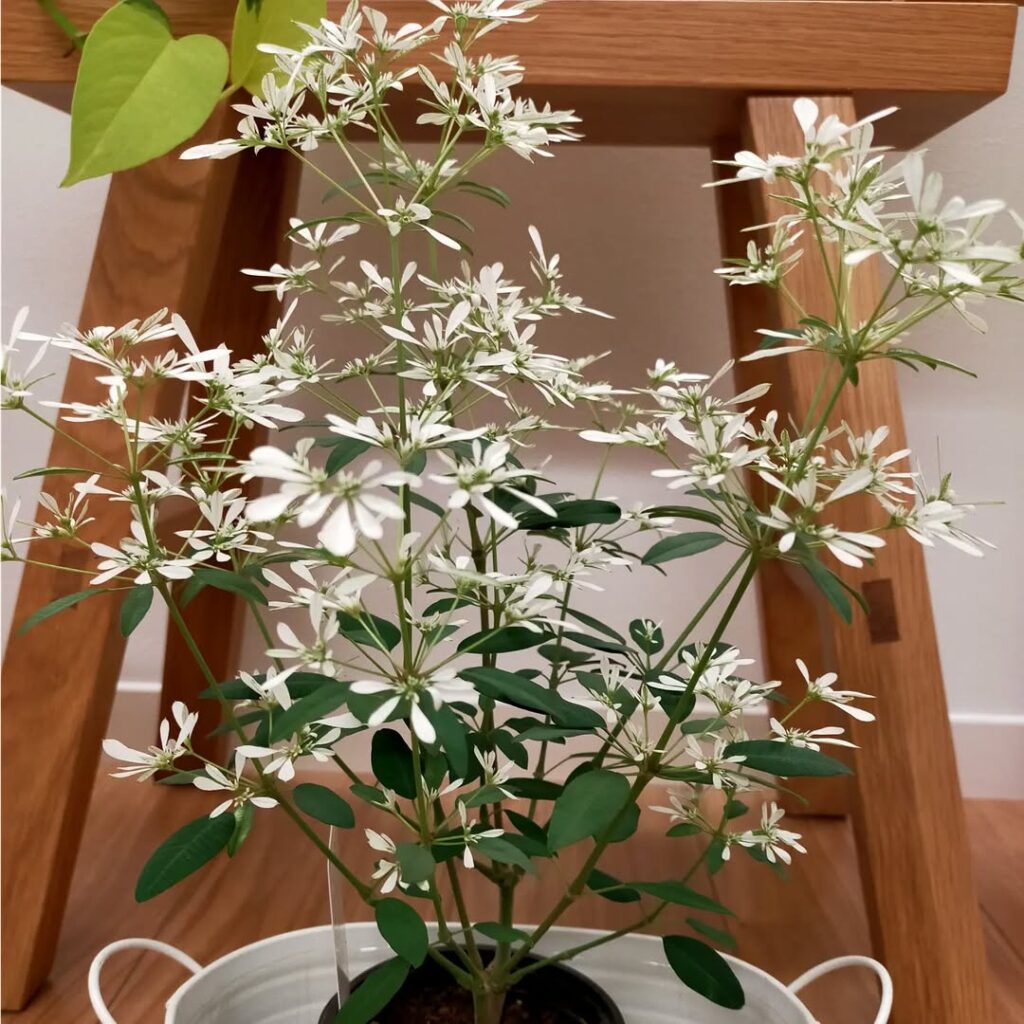
This shrub-like Euphorbia features delicate white bracts that resemble snow-covered branches, making it a beautiful indoor accent.
Euphorbia francoisii

A highly decorative variety, Euphorbia francoisii has colorful, wavy leaves that vary in shades, making it a standout among Euphorbias.
Caring for Indoor Euphorbias
Most Euphorbias need bright light, well-draining soil, and occasional watering. They do best in dry, warm environments and don’t like sitting in water. Make sure to use a pot with drainage holes and avoid overwatering.
With these stunning Euphorbia varieties, you can add fascinating shapes and textures to your indoor space. Which one is your favorite?
